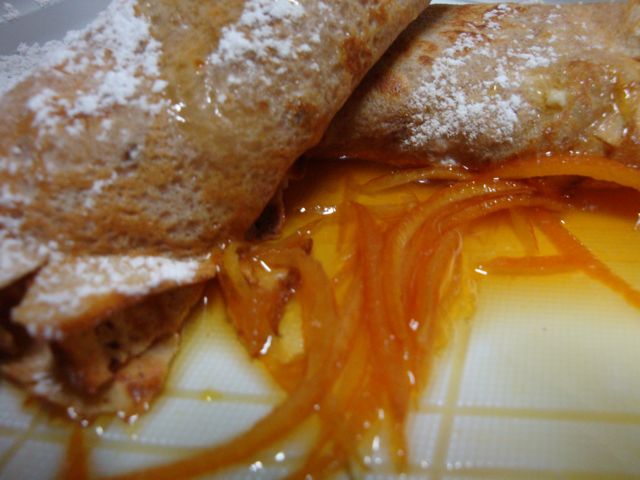Master Chef
I have mentioned before that the real cook in our family is Enzo, my Neapolitan. My daughter says that his most important job as a Dad is not helping her to unravel a sticky ancient Greek phrase or stubborn algebra problem but having a wonderful plate of pasta on the table served with hugs when she gets home from school.
However, I am the one in the house who likes to turn my hand to desserts and therefore jumped at the opportunity to attend a cooking demonstration by Chef Gianluca Pardini from the Associazione Cuochi Lucchesi, a professional chef, international teacher and consultant on Italian cuisine.
I have never attended a cooking seminar before and my first delight was to step into a lecture theatre, which was a kitchen. Somehow seeing the raked seating, an audience of young aspiring chefs and amateur cooks all with a passion for cooking and eating, was very comforting in this age of fast food. It turned out that in this small city most people knew each other and I was soon enfolded into the friendly atmosphere.
Gianluca Pardini is a charming man and a seasoned teacher. His manner was relaxed and gioval. Chestnuts had been the theme of the weekend at the Lucca
“Il Desco“ food festival, so he chose to demonstrate a recipe that he had developed, a Lucca twist on crepes or crespelle in Italian. The recipe was chestnut flour crepes filled with ricotta and pine nuts served with a caramelized orange sauce and garnished with rosemary.
Here in Lucchesia we are very big on chestnut flour. I have become passionate about this product since arriving in this area. Historically in the countryside chestnuts have kept the population from starvation. Chestnuts flour has a higher protein content than wheat. To make these crepes a small percentage of wheat flour was used principally for aesthetics, because chestnut flour has no gluten, therefore when you roll the crepes they tend to break. The gluten in the wheat flour makes them more elastic. For Celiac sufferers missing out the wheat doesn’t detract from the taste, but the crepes will just look a little more rustic. Gianluca’s easy chat while he was preparing the crepe mixture meant he had no difficulty in finding volunteers to help him make the crespelle, so he had enough for us all to try one . One of the helpers was a teenage boy, who at first appeared tense but after the maestro had told him to move the mixture around the pan as though it was a joystick, he relaxed and ten minutes later was even tossing them like an old pro.
How often I have watched in wonder as chefs on telly, glide with their knives cutting faster than the eye can take in. The live performance was art, orange-rind was sliced, the knife seemed to hardly move as tiny equal slithers were produced. This perfect execution of the technique of the knife made me feel very cack handed and think what fun it would be to learn these skills and attend one of his classes. He gave us all confidence by pointing out that no one had ever lost a finger on one of his courses!
While the helpers were busy producing the crespelle, the chef mixed the ricotta filling and made the caramelised orange sauce.
The combination of fresh orange against the cool ricotta and rich wintery chestnut flour of the crepelle was exquisite. This isn’t my recipe so I can’t pass it on but why not take an ordinary crepe recipe but use chestnut flour and create your version. The Maestro believes recipes should only be used as a feed to the imagination. Outside Italy chestnut flour can be found in specialist Italian stores and on the Internet. I think Gianluca should have been at the talk the week before, where the Lucchesi were accused of not being innovative, because the crepes were certainly a Lucca variation on a theme.








Comments
Post a Comment